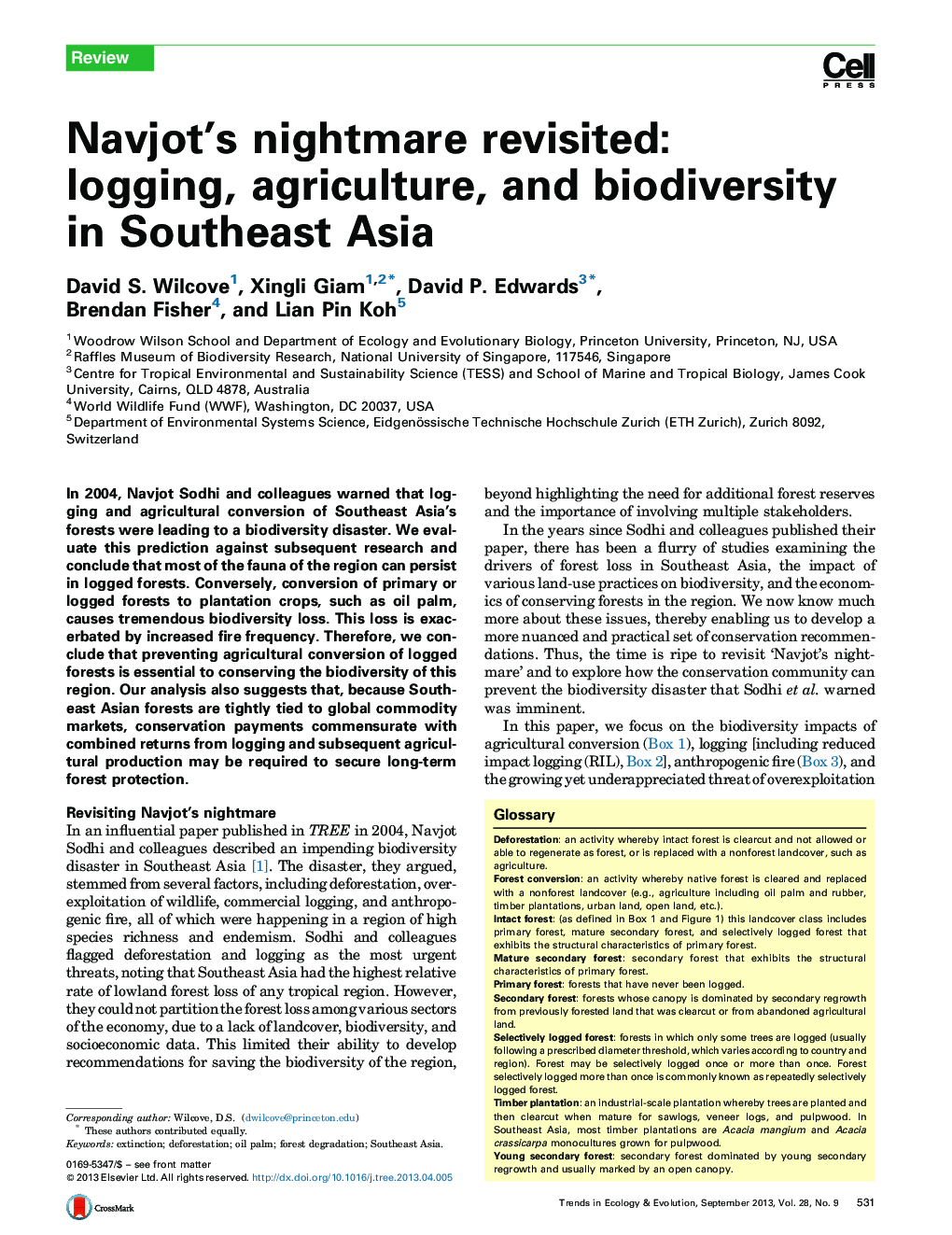| کد مقاله | کد نشریه | سال انتشار | مقاله انگلیسی | نسخه تمام متن |
|---|---|---|---|---|
| 142447 | 163121 | 2013 | 10 صفحه PDF | دانلود رایگان |

• Southeast Asia has the highest rates of forest degradation and conversion in the tropics.
• New research shows that forest conversion to cropland, especially oil palm, results in much greater losses of biodiversity than does even intensive logging.
• There is little evidence that crops such as oil palm or rubber can be grown in ways that sustain forest-dependent species.
• Preventing the conversion of logged forest to cropland should be a top priority of conservationists; moreover, it provides a cost-effective way to protect much (but not all) of the forest biodiversity of the region.
In 2004, Navjot Sodhi and colleagues warned that logging and agricultural conversion of Southeast Asia's forests were leading to a biodiversity disaster. We evaluate this prediction against subsequent research and conclude that most of the fauna of the region can persist in logged forests. Conversely, conversion of primary or logged forests to plantation crops, such as oil palm, causes tremendous biodiversity loss. This loss is exacerbated by increased fire frequency. Therefore, we conclude that preventing agricultural conversion of logged forests is essential to conserving the biodiversity of this region. Our analysis also suggests that, because Southeast Asian forests are tightly tied to global commodity markets, conservation payments commensurate with combined returns from logging and subsequent agricultural production may be required to secure long-term forest protection.
Journal: - Volume 28, Issue 9, September 2013, Pages 531–540